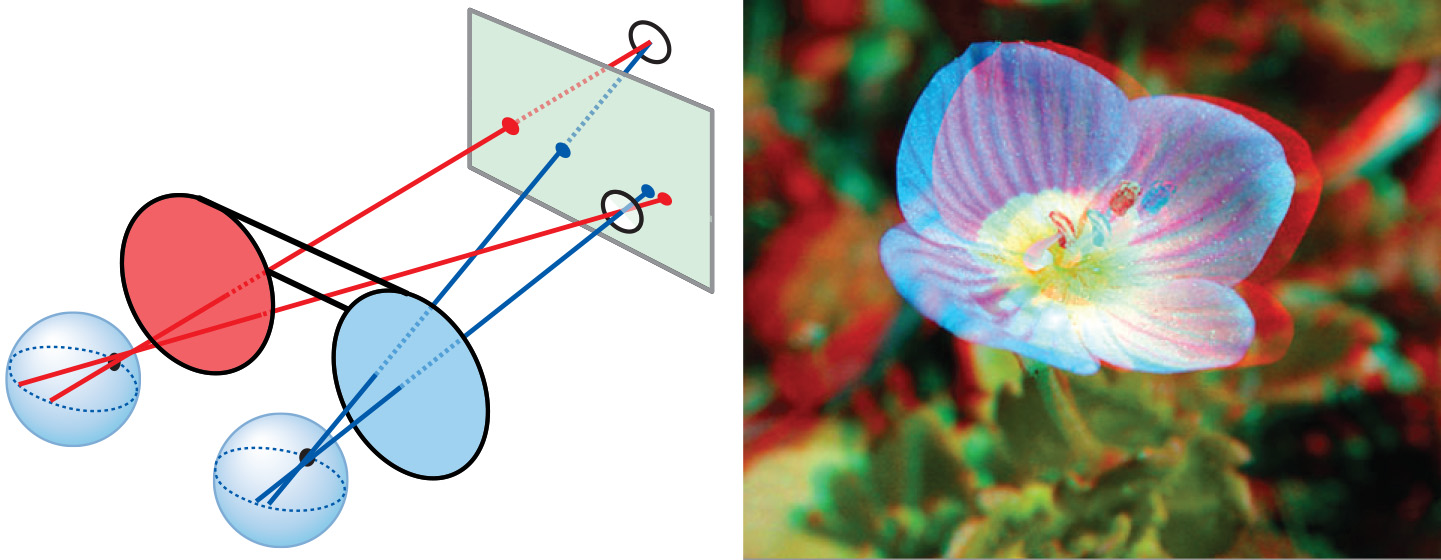Stereoscopic viewing
Introduction
To obtain a 3D visual model from a stereo-image pair on a computer screen using a device that helps us to view the left image with the left eye and the right image with the right eye.
There are various technical solutions for this problem, one of which is the anaglyph method. The left image is displayed in red, the right one in cyan and the two images are superimposed. For viewing, you need spectacles with a red glass for the left eye and a cyan glass for the right eye. High-end digital photogrammetric systems use polarization instead of colour coding. Polarized spectacles make the images visible to the appropriate eye. The advantage of using polarized images is that we can display a full-colour stereo model and superimpose the results of measurements in any colour. Yet another approach is to use a “split screen” display and a stereoscope in front of the monitor.
A stereoscope is a device consisting of a pair of binoculars and two mirrors, which allows two images positioned next to each other to be viewed simultaneously, thus achieving stereoscopic vision. Stereoscopes can also be used to view paper prints of stereo photographs.

Incoming relations
- Height is based on Stereoscopic viewing